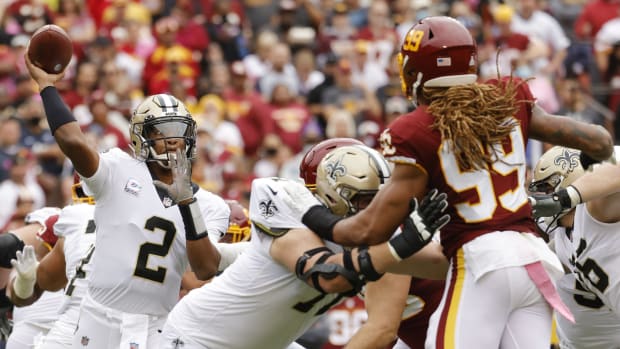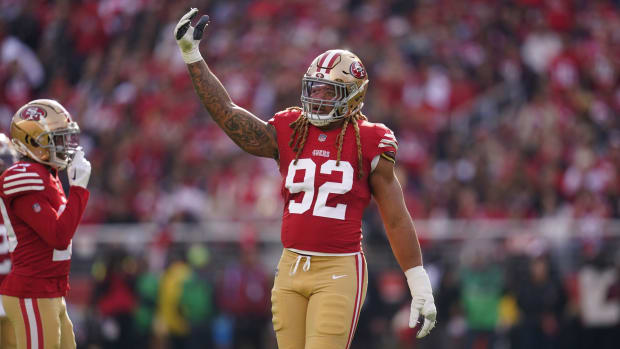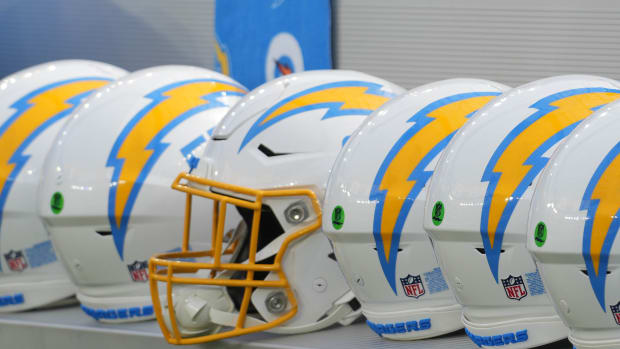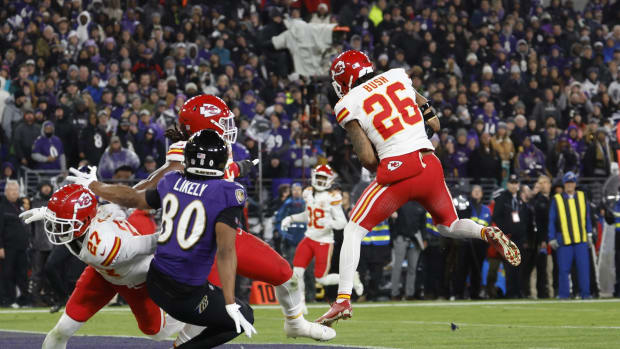
The Bears’ Big Decision
The Bears have a big decision ahead with the player who has been the (sometimes sour) face of their franchise since 2009, Jay Cutler. With the importance of the quarterback position and the financial commitment involved, all other decision-making with the team will flow from their action with Cutler, whose contract ends after the season. The decision is similar to one that many organizations—in all sports and all businesses—face: whether to invest what is required to continue with the status quo or move forward into a new chapter of the company.
Removing the noise
General manager Phil Emery proactively announced before the season that there would be no player contract extensions in 2013. While the broad statement was about all players, the one most affected, of course, was Cutler. Unlike several other teams this offseason, the Bears were not willing to extend their established and proven quarterback nearing the end of his existing contract.
Emery’s strategic pronouncement: (1) removed any chatter about “will they or won’t they extend Cutler” during the season; (2) provided motivation for Cutler—and others with expiring contracts—to perform without long-term financial security; and (3) allowed management, having just hired a new coaching staff led by Marc Trestman, to step back and appraise allocation of resources, at quarterback or elsewhere.
While Emery took some risk in not securing Cutler—see Flacco, Joe—it was a sensible approach in dealing with the team’s most important position.
Overall body of work
Cutler’s play can be uneven, but he is a talent.
Cutler has missed time this season with a groin injury, as well as a high-ankle sprain. (Simon Bruty/SI)
I remember our Packers scouts gushing about Cutler’s 2006 Pro Day workout at Vanderbilt; he whistled passes effortlessly through a winter gale. I also remember playing against him in Denver where our scouts, watching one particular throw, muttered a collective, You've got to be sh---ing me. His talent and arm strength is tantalizing. However, he has been inconsistent and can be loose with the ball. And this inconsistency can manifest itself not only within the same season but also within the same game!
In deciding to invest the required guaranteed money to secure Cutler for the future, it is important to evaluate as complete a body of work as possible. While fans and media can react to the emotion of the moment and swing with the wind week to week, team management cannot. Reacting on impulse can be hazardous not only to the health of NFL coaches and management, but also to the team’s overall long-term health.
In this important final season of his contract, Cutler has been injured, and his backup, Josh McCown, has played well. While some have suggested that this indicates either (1) a future for McCown or (2) no need for an elite quarterback in Trestman’s system, the Bears wisely will not react to the short term. McCown, turning 35 in July, is certainly not the long-term answer. Jay Cutler, turning 31 in April, has been their past and might well be the future.
The market
Will Steelers Blow It Up?
The Steelers face a different type of decision than the Bears do with their star quarterback in the offseason. Now finishing his sixth year of an eight-year, $102 million deal, Ben Roethlisberger might be presiding over a different type of team going forward.
No team in the NFL has restructured more contracts to defer cap room since 2011 than the Steelers. While some of the “mortgaged” players include young stars such as Lawrence Timmons and Lamarr Woodley, older players also have been restructured, including James Harrison (now released), Heath Miller, Troy Polamalu and Roethlisberger in each of the past three years.
These short-term gains, however, have led to long-term pain, as the Steelers have kept their core veteran players together at a large cost. The 2014 cap numbers for players such as Timmons, Woodley, Polamalu, Miller and Ike Taylor will all be around $10 million, and Roethlisberger will be around $19 million. The bill is coming due for this team.
The 2014 offseason will be a referendum on the Steelers. They knew the risk of pushing cap out to maximize performance in their window of success. Now the question is whether they will accept the closing of this window and try to open another with a different group of core players.
I have no inside knowledge of the Steelers’ plan, but my sense is that in order to progress and not stagnate there must be tough decisions. And some players whose contracts have been mortgaged might soon be evicted, leaving dead-money charges in their wake.
Roethlisberger is the signature player of a franchise that might be moving from a veteran team hanging on to its past to a younger team hoping for a future run of similar success. It sets up a decision point for the organization and potentially for Roethlisberger: whether to continue the course with an aging and expensive team, or to change direction at many levels, perhaps even at the level of its most valuable player.
—A.B.
The upper echelon quarterback market has been active over the past couple of years, setting up fresh and relevant data points for Cutler and the Bears.
In 2012, two of the league’s A-listers secured new contracts. Peyton Manning, released by the Colts, chose the Broncos over several teams, at least two of which—the Titans and Seahawks—would have paid significantly more than the $18 million average per year (APY) and $58 million guaranteed he received from Denver. Later last year, the Saints and Drew Brees set a new standard for NFL players, a $20 million APY, with $40 million in the first year and $60 million guaranteed.
This offseason Joe Flacco negotiated a $20.1 million APY with $52 million guaranteed. I actually thought that, with the leverage Flacco had coming off a Super Bowl victory, the structure—with only this year guaranteed and option bonuses in the next two years—would be more secure.
Following the Flacco deal came extensions for Tony Romo, Aaron Rodgers, Matthew Stafford and Matt Ryan. While the Stafford guarantee was “only” $43 million, the other contracts have guarantees ranging from $54 million to $59 million, with Ryan the fortunate beneficiary of going last; his guarantee is the highest.
While the marketplace range is roughly $18-20 million APY and $52-60 million guaranteed, these deals are hard to compare as players come from different points in their contract stream: Manning was a free agent, Brees and Flacco were on franchise tags, Romo and Ryan were in the last year of their deals, and Rodgers and Stafford had two years remaining.
(As an aside, I have never understood why the top quarterbacks do not push for fully guaranteed contracts, such as those given to even below-average NBA and MLB players. Yes, the NFL has not done that for veteran players, but are teams really going to tell their franchise quarterback they will not guarantee later years of their deals so they can be able to cut them? No NFL players have more leverage to make this “ask” than these.)
The fundamental question is whether the Bears value Cutler to the extent the aforementioned teams value their quarterbacks. Before any negotiations, Emery and Trestman must make that franchise-defining decision.
If and when that decision is made, agent Bus Cook—a longtime friend of mine from years of dealings on Brett Favre—will enter the picture. Cook’s country lawyer façade belies a smart and savvy negotiator. He certainly will argue that, like Flacco, Cutler’s imminent free agency in a league salivating for proven quarterbacks has extraordinary value.
The Bears in turn could counter with the franchise tag, a powerful management tool now strengthened in the new CBA, as the calculation of the value of the tag now rolls in the previous five years, rather than only one. The threat of the tag allows teams to negotiate aggressively, knowing a player’s alternative is a one-year deal. Although those one-year earnings are high, the tag prevents the player from receiving a deeper commitment and sense of security.
The tag obviously is in play with Cutler. It gives the Bears (1) another year to judge the body of work of Cutler in evaluating a deeper commitment, and (2) negotiating leverage towards the type of longer contract they would prefer.
What will happen?
Cutler, warts and all, has immense value. Beyond the unique circumstances that set Peyton Manning free, it is rare to see a quarterback with proven performance on the open market. Indeed, the Bears acquired Cutler for a package including two first-round picks, as valuable a currency as there is in the NFL. If Cutler were a true free agent, several quarterback-needy teams would pursue him. His market value is not a question of how “good” he is; rather, it is a function of short supply and high demand.
My best guess is the Bears will resort to the compromise option and apply the franchise tag to Cutler in February. Cutler’s uneven performance this year—complicated by injury—makes it the most reasonable option. The better question is whether the Bears will tag with an eye toward negotiating a long-term deal, or to pay approximately $16 million to continue to assess whether Cutler is the long-term answer for the Bears. In the past three years, Michael Vick, Drew Brees and Joe Flacco have all been saddled with the tag, only to reach agreement on a longer deal.





































